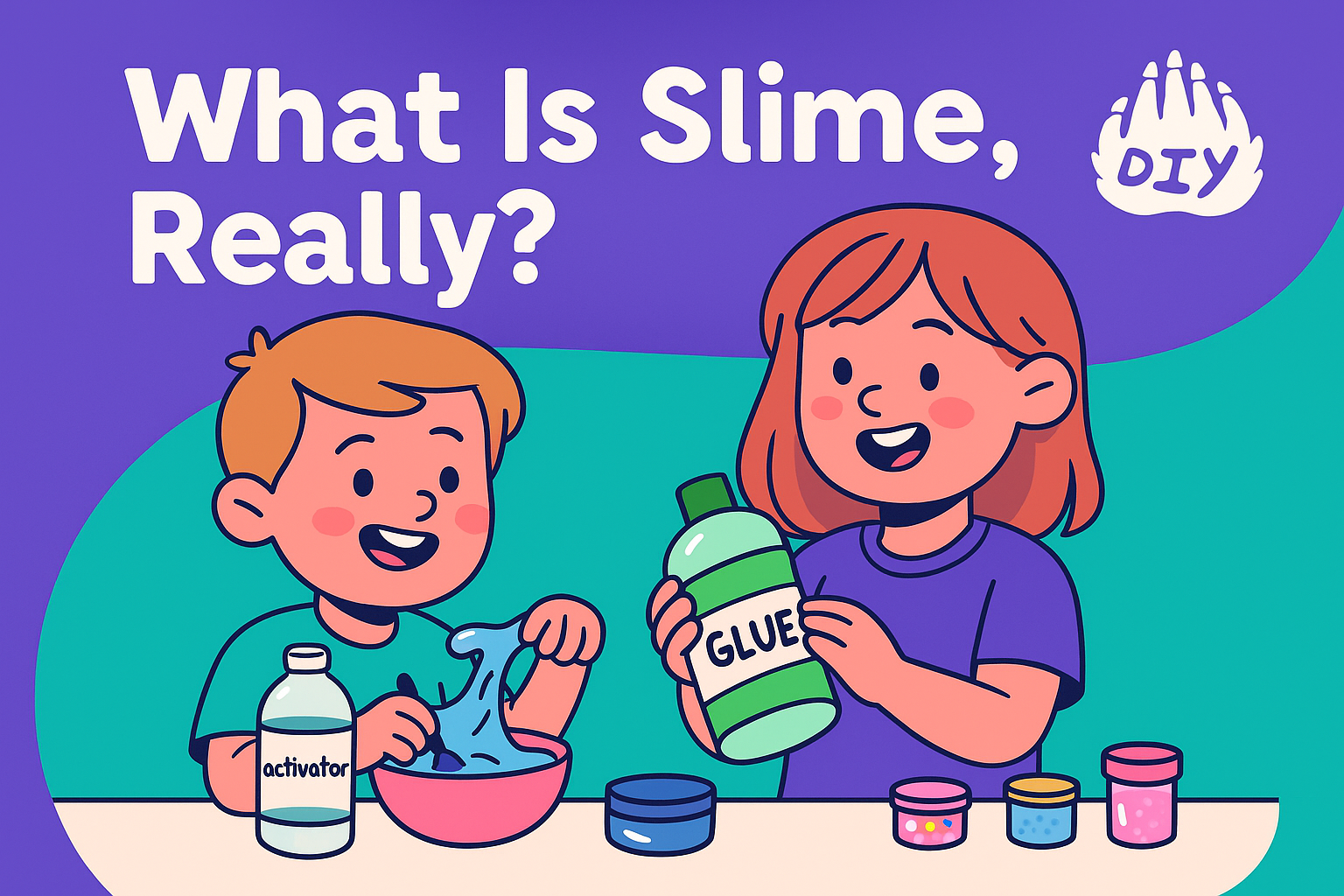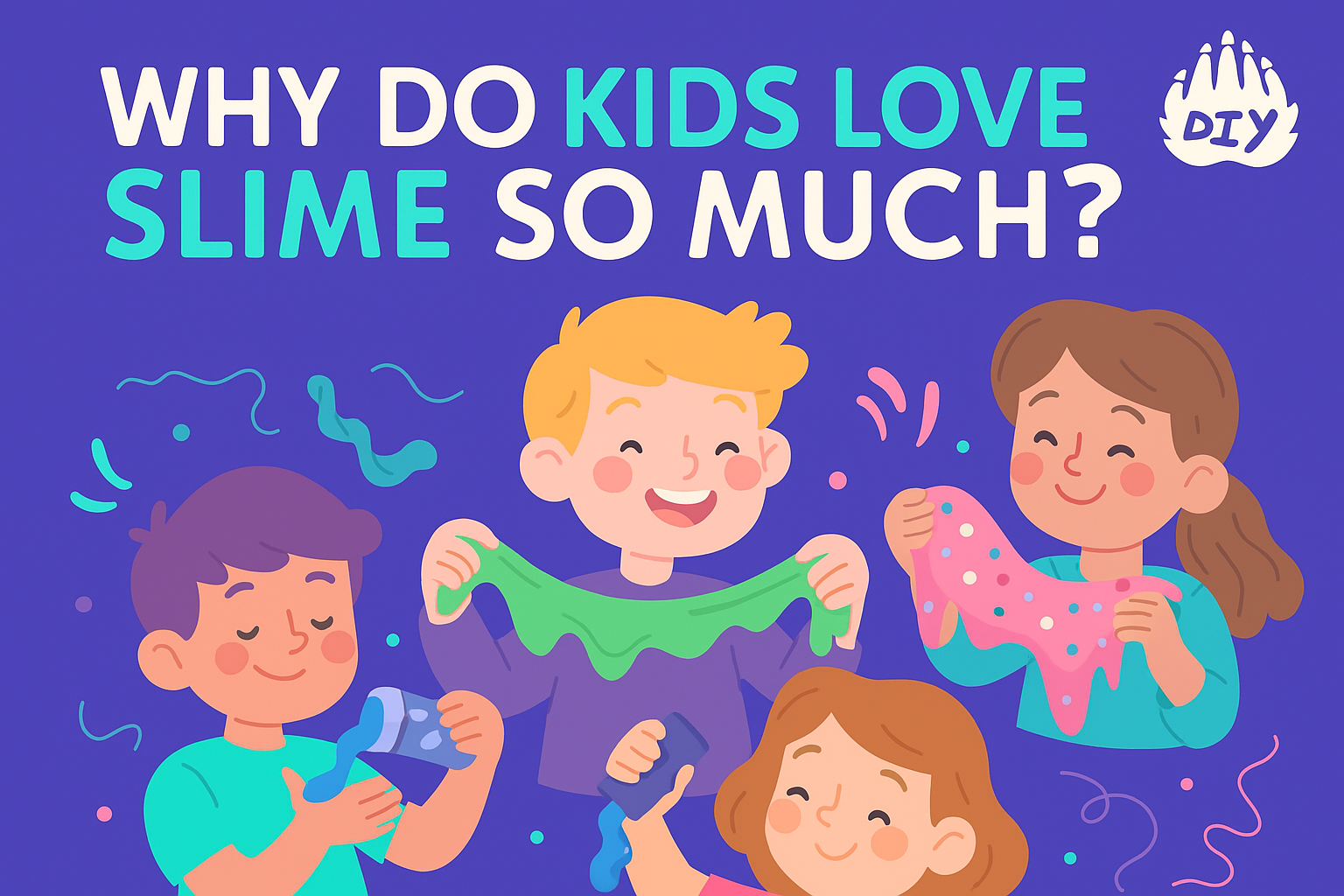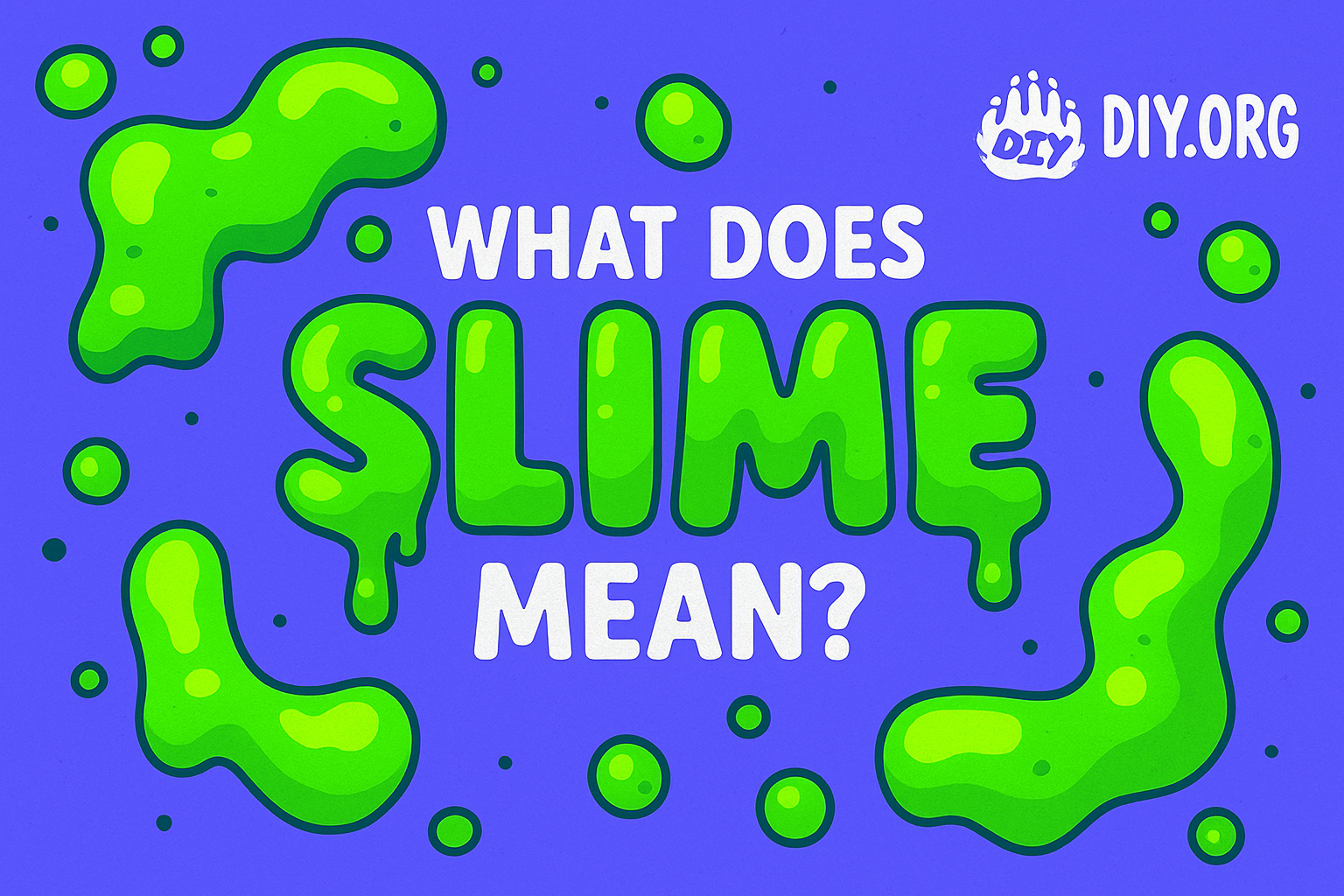Slime is more than just a gooey substance, it’s a full-on cultural phenomenon. Kids love it. Parents tolerate it. And the internet? It can’t get enough of it. But what does slime really mean, especially for families navigating the mess, magic, and mania of this squishy trend?
Whether you're a confused parent wondering why your child suddenly wants to mix glue with shaving cream or you're trying to understand the appeal behind viral slime videos, this guide will walk you through everything you need to know. We’ll cover what slime is, why kids love it, whether it's safe, and how it’s become a global craze.

What Is Slime, Really?
In the world of science, slime is classified as a non-Newtonian fluid, meaning it doesn’t behave like a typical liquid or solid. But to kids, slime means stretchy fun, creative freedom, and satisfying sensory play.
At its core, slime is made from a few basic ingredients.
White school glue (PVA glue)
An activator (commonly a borax solution, saline solution with baking soda, or liquid starch)
Optional add-ins like glitter, beads, scents, and food coloring for customization
This goopy material can be homemade or store-bought, and its popularity is driven by how easy, and addictive, it is to make and play with even without glue or traditional activators, thanks to creative DIY slime recipes.

Why Do Kids Love Slime So Much?
If you're wondering why your child is suddenly obsessed with slime, you’re not alone. Here’s what makes slime irresistible to kids (and honestly, a lot of adults too).
It’s hands-on and tactile. Kids love the feeling of stretching, squishing, poking, and swirling slime. It’s a full-body sensory experience.
It’s a DIY science experiment. Mixing ingredients to “activate” slime feels like magic. Kids learn cause and effect in real time.
It’s endlessly customizable. From glittery unicorn slime to crunchy foam slime, kids can personalize textures, colors, and scents to match their preferences.
It’s social. Slime-making is a popular party activity and a trending topic across YouTube, TikTok, and Instagram. It’s a shared hobby and conversation starter.
One parenting blogger put it best. “Slime is the playdough of Gen Z.”
Different Types of Slime and What They Mean
Slime isn’t one-size-fits-all. Over time, creative kids and content creators have developed dozens of slime variations, each offering a unique sensory or visual experience.
Here are some of the most popular types of slime.
Fluffy Slime. Made with shaving cream, this slime is light, airy, and puffy to the touch.
Glossy Slime. Smooth, shiny, and sleek. It often creates satisfying poking sounds.
Butter Slime. Made with soft clay, it’s spreadable like butter and often less sticky.
Clear Slime. Transparent and glassy. Great for showing off glitter or beads inside.
Crunchy Slime. Filled with foam beads, plastic snow, or charms. Adds sound and texture to the experience.
Each type offers a different form of engagement, from visual appeal to auditory ASMR-like satisfaction.
Is Slime Safe for Kids?
For the most part, yes, slime is safe when used with care and supervision. Most basic slime recipes use common household materials. However, not all ingredients are suitable for all ages.
Here’s what to watch out for;
Borax use. Borax (sodium borate) is a common slime activator, but overuse or improper dilution can cause skin irritation.
Younger children. Little kids may be tempted to taste or swallow slime. Stick with edible slime recipes or non-toxic, borax-free versions.
Allergies. Dyes, fragrances, and additives can sometimes cause allergic reactions or skin sensitivity.
Clean-up concerns. Slime can stain clothes and furniture if not handled properly. Always play on wipeable surfaces and wash hands after use.
Look for slime kits labeled as “kid-safe” or recipes designed for preschoolers using ingredients like marshmallows, cornstarch, or gelatin.
Slime in Pop Culture
Slime is not just for kids' craft projects anymore. It has become a cultural icon seen on TV, social media and even in small business trends.
Nickelodeon Slime
For anyone who was a child in the 1990s, Nickelodeon slime is very familiar. This bright green goo was poured on guests during shows such as Double Dare and You Can't Do That on Television. Being "slimed" was not seen as a penalty; it became part of the enjoyment and one of the channel's most unforgettable customs.
Slime Videos and ASMR
Nowadays, most people who enjoy slime are found on the internet. Slime videos have become very popular on TikTok, YouTube and Instagram. These videos show detailed shots of colorful slime being pulled apart, pressed down and mixed around. The pleasant noises and feels connect to the ASMR trend, where people watch to relax or just like the sensory experience. Many well-known slime creators have changed their channels into successful businesses.
DIY Slime Shops
Slime has also opened the door for young entrepreneurs. Kids and teens are setting up DIY slime shops on Etsy, Instagram, and at local markets, offering custom colors, scents, and textures. It’s a hands-on way to learn about running a business while sharing something creative with others.
Is Slime Educational?
Yes, slime can be both fun and educational. In fact, it’s often used in science classrooms, therapy settings, and at-home STEM activities.
Here’s how slime helps kids learn;
Chemistry concepts. Mixing glue and activators teaches children about chemical reactions and polymers.
Sensory integration. Therapists use slime for children with sensory processing needs, helping them regulate touch sensitivity.
Problem-solving. Kids learn to fix “failed” batches of slime by adjusting ingredients or proportions.
Creative thinking. Designing new textures, scents, and colors encourages experimentation and artistic expression.
Some teachers even use slime during lessons on states of matter or as a reward activity after test days.
How to Make Slime at Home (Safely)
Want to try making slime with your child? Here’s a basic, parent-approved recipe.
Ingredients
1/2 cup white school glue
1/2 cup water
Food coloring (optional)
1/2 teaspoon baking soda
1 tablespoon saline solution (contact lens solution with boric acid)
Instructions
1. In a bowl, mix glue and water.
2. Add food coloring and stir.
3. Mix in baking soda.
4. Slowly add saline solution while stirring. Slime should begin to form.
5. Knead with your hands until it reaches the desired consistency.
Store slime in an airtight container to keep it from drying out.
Why Slime Matters for Kids
So, what does slime mean today? It’s more than just a gooey pastime it’s a hands-on way for kids to express creativity, explore basic science, enjoy sensory play, and even connect with friends. Whether it’s on the kitchen table, a classroom desk, or a social media feed, slime has found its place in everyday life.
You don’t have to love the mess to appreciate the benefits. Set simple rules for when and where slime play happens, and use it as a chance to join in. Mixing, stretching, and experimenting together can turn a messy trend into a shared learning experience.
This weekend, try making a small batch with your child. It’s fun, a little bit educational, and a great excuse to spend time together no screens required.
References. “Why Kids Are Obsessed With Slime.” Parents Magazine, 2023. “The History of Nickelodeon Slime.” Nick Rewind, YouTube, 2020



